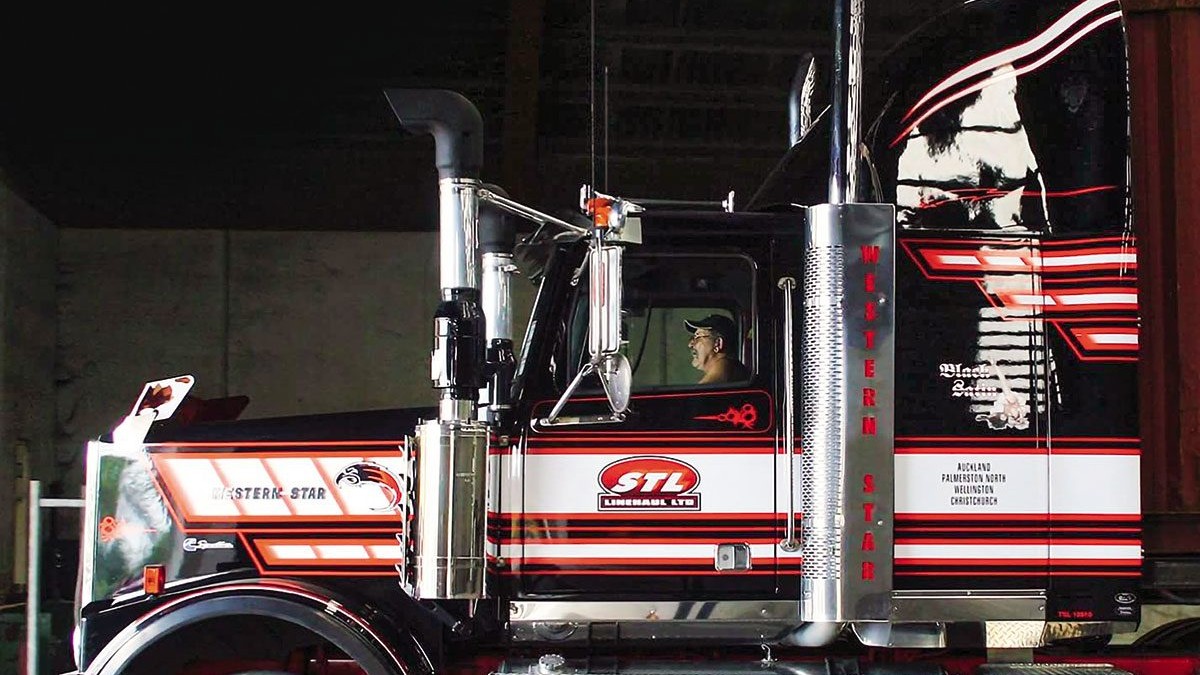
At 75, most people would be forgiven for sitting back and taking things easy after a long working life, but not Mike ‘Charlie’ Charlton. His has been a career for the books, filled with the kind of antics that exist today only in trucking lore.
Born in Wellington in 1948, Mike ‘Charlie’ Charlton left school at 14 and spent two years as a shearer. When he was 16, he was offered a job driving trucks for Alvin McWatt.
“I got my truck licence when I was 16. I put my age up; I never had a licence until then,” Charlie says.
The job involved tip work, carting metal out of the Whitford quarry, and clearing house sites. “I enjoyed that job. It was a great job. It wasn’t very good money in those days, but good fun.”
Charlie worked for McWatt for two years and then went to Pauatahanui and got a job with Stock Transporters, carting sheep and cattle, a bit of fertiliser, and other agricultural supplies around the lower North Island. “I started there in an S Model Bedford, and I worked for them on and off for more than 50 years,” he says.
Charlie also worked for Dales Freightways in Auckland and Rodney and Otamatea Transport in Wellsford, carting livestock and freight. After applying for a job with Refrigerated Freight Lines, Charlie got a telegram to say there was a vacancy in Johnsonville if he was interested.
“I moved down there, and I drove for them for a couple of years. That was a good job, good money, and all over the country. We used to cart the meat from Waingawa Works at Masterton to Foodtown in Auckland. And then ice cream to Gisborne, and Wattie’s stuff from Gisborne to Wellington, all over the place.”
From there, Charlie went back to Stock Transporters – which later became STL Line Haul. “I went back to Stock Transporters, and then I moved to Auckland and went back to work for Alvin’s son, Laurence McWatt. I drove a truck and trailer tip truck – tip work and that around the Auckland region. Then we used to do phosphate down to Morrinsville off the Auckland wharves.”
During this time, Charlie bought a truck, a D series Ford, and continued doing local tip work around Auckland. “Then I bought a flat-top truck and worked for Brambles and JB O’Loghlen, carting steel and general freight off the wharves in Auckland. I bought a bigger truck, a Leyland LAD, and moved over to Brambles New Zealand Freighters, doing local container work and linehaul.”
Charlie says the work was interesting, and in those days, it involved manual labour. “You couldn’t manually load the steel, but everything else off the wharf you had to wheel along with a barrow.”
An ERF followed, the year and model now long forgotten. “It was an eight-wheeler and a trailer, and I covered wool for Lichtenstein and Co from Napier to Auckland. It was good money in those days. You just put the trailer up and went back and got another load. You didn’t have to worry about a back load.”
From there, Charlie went to Mainfreight, becoming the company’s first owner-driver. “The owner of Mainfreight was Bruce Plested, who was the manager for Brambles. He started Mainfreight, and Terry Cunneen, who had also worked for Brambles, was the transport manager.
“Mainfreight had just started, you know, it was a brand-new company. And there I met a fella called Gary Songhurst, who was their driver, and we have had a lifelong friendship since then.”
Charlie says the pair of them got up to a lot of “naughty things” during their time there. “I couldn’t put some in writing; I’d probably end up in jail. But we had a tremendous time. We were still working under the rail restrictions – we could only cart 40 miles [64km]. We used to cart to Christchurch and Dunedin and all over the place We were sort of pirates as such, and they were really good days. There weren’t too many pirates, and we all kept pretty close to avoid the law. They were good days, a lot of hard work, long hours, but also a lot of fun.”
After four years, Charlie decided to go out on his own, doing the same sort of jobs. “I had quite a good client base because everybody wanted their freight to go by road. And the railway relented a wee bit, and you could buy a permit for each load to go places. So we were sort of semi-legal.”
Charlie says he made a lot of friends and gained some good contracts during that time. “It was hard yakka – some weeks, I’d do three trips a week from Auckland to Christchurch. It was hard work, but good money.”
Charlie started off driving the ERF and then bought a 1980 Mack FR 350, but he says he’s driven all sorts of trucks. He’s also done a lot of different types of trucking work over the years, including livestock and forestry work.
“I enjoyed driving the doubles in the Kaingaroa Forest, that was something totally different, a hundred tonne everywhere, and they were good people in there. I did that for about four and a half years.”
By this time, Charlie was married, but when his marriage ended, he had to sell up to pay his wife half when they divorced. “I went back to STL Line Haul, which used to be Stock Transporters. And I was there that time for probably about 30 years.”
Charlie had lived in Taupo while working for STL and when he retired in May 2022, he returned to Taupo. “I’ve always loved working. Retirement wasn’t really for me, so I’ve been doing a bit of part-time work driving logging trucks for different people until Christmas last year.”
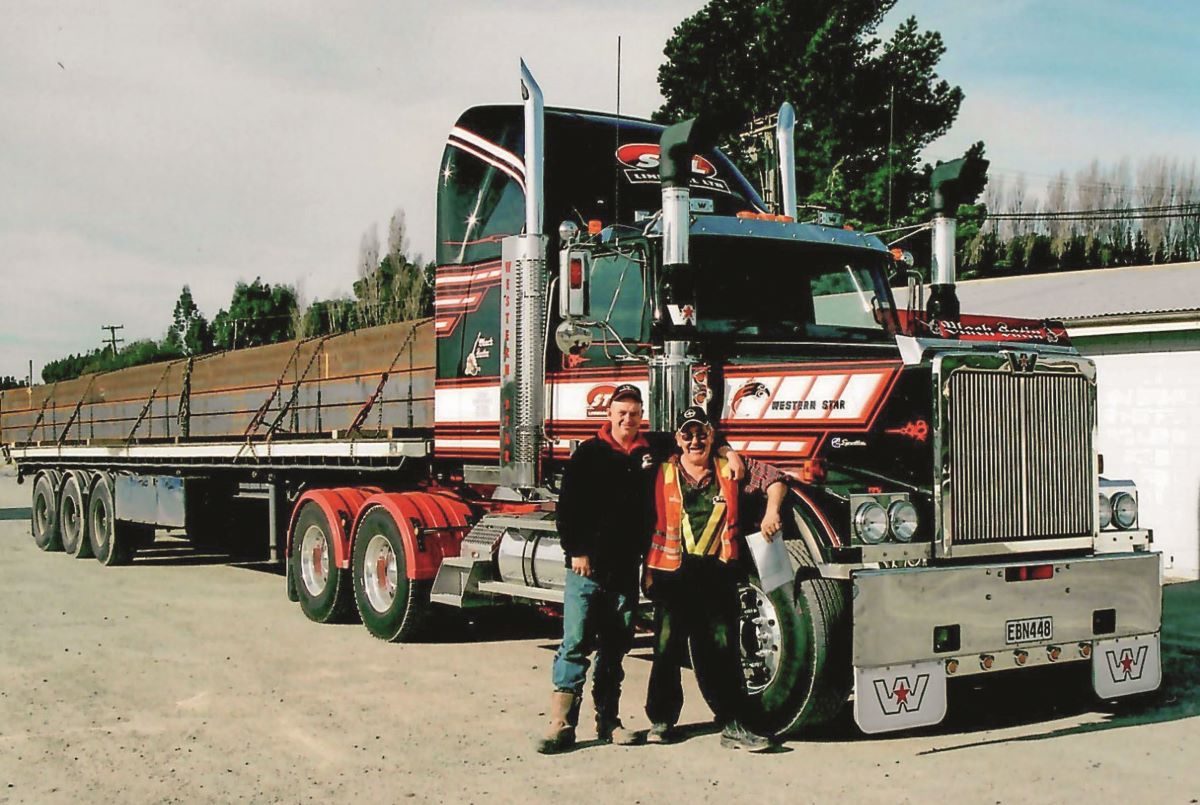
Charlie says he’s never had to provide a CV to any employer, gaining all his jobs through word of mouth. “Or I’d hear of something, and I’d go in and make a few enquiries.”
Talk to anyone who knows Charlie, and there will be a story to tell. Like the time he was delivering stock to the saleyards with Snow Pearson.
“Oh, yeah,” recalls Charlie. “That was a way back. We went to the Masterton sale with some cattle from out Makara. And when we got there, it was a union card day and none of us had a card.
“Snow didn’t have a card. I didn’t have a card. Kieran [Snow’s nephew] never had a card. So they weren’t going to let us unload.
“Snow said to me, ‘You get out and knock them out, and I’ll back the truck in.’ So I got out and bowled this union fella over in a big puddle and Snow backed in and we unloaded. He recovered, and he was shouting, ‘You’ll never get unloaded at the works; you’ll never get unloaded anywhere.’ We were blacklisted. So, we hung around the sale and we got about four loads of cattle for the Gear Meat Company. We took them down there, and our mate was the shepherd there, Al Gill, and we never ever heard any more about it.”
Shane Pearson says Charlie used to work for his father in the 1960s. “They used to cart Super from Porirua. It would be in 10-tonne rail wagons and Dad had a clamshell they used to load it onto trucks to take to various airstrips around Wellington.
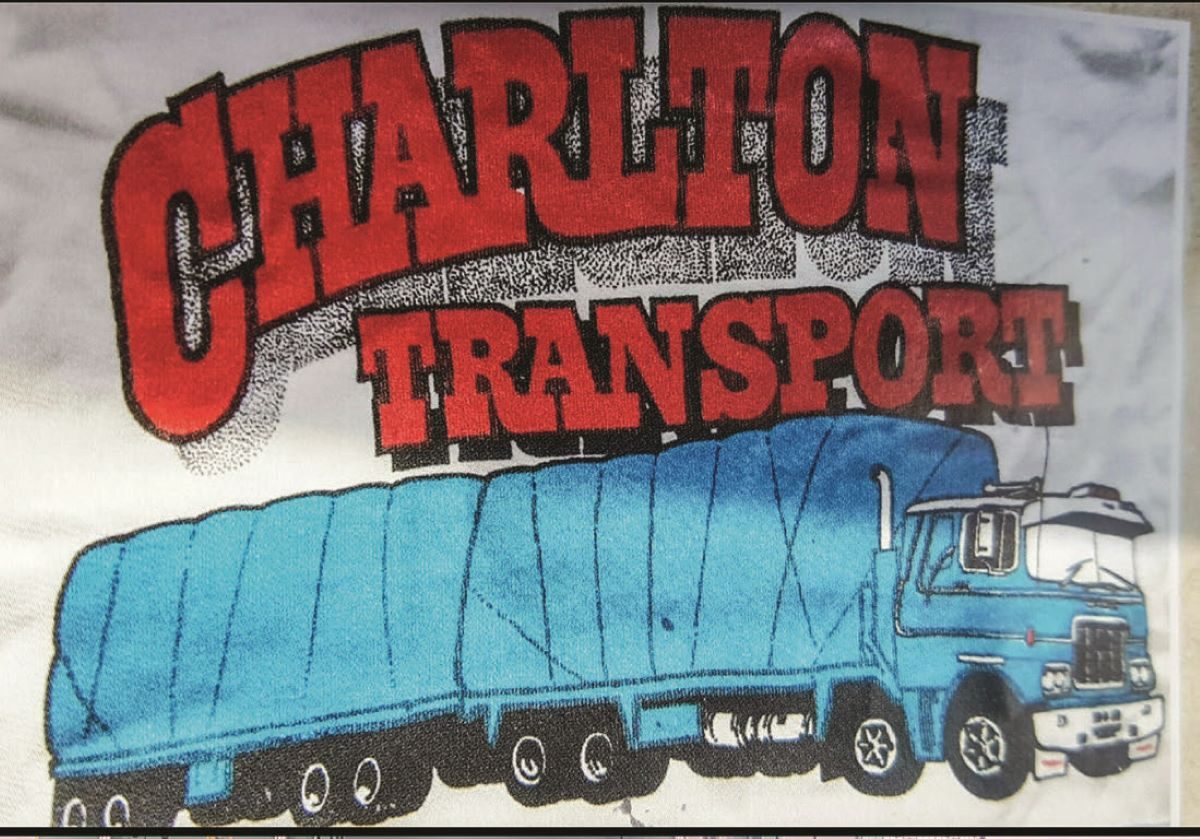
“Dad sent Charlie down to do a load one day, and it got well past the time that Charlie should have returned. There were no mobile phones in those days, so Dad hopped in his car and went to see where he was.
“He found Charlie shovelling the last of the 10 tonne of Super onto his truck. He couldn’t get the clamshell to work so he got out his shovel and loaded the 10 tonne out of the wagon and into his truck by hand. Not many people would do that today, but that was the kind of guy he was.
“That was one of the things that stuck with me from when I was a young fella.”
Charlie was also a great one for optimising the load space of his trucks.
When five-axle B-trains first came on the scene, Charlie was asked to head out to a West Auckland winery and load 20 tonne of wine on pallets for Wellington. These were in the days of 39-tonne gross loading so 20 tonne was pretty much a full load. So Charlie loads up, and once loaded, heads back to the yard and is waiting around. Finally, the dispatcher wonders why Charlie isn’t heading off to Wellington so asks, “Everything all right, Charlie?” and with that, Charlie politely asks, “Yes, good thank you, but do you have anything for the back unit?”
Another time Charlie had loaded both units right through with drums of cable at M&M Cables in Sockburn, Christchurch. Next, it was around to Skellerup in Opawa to load cartons of gumboots on top of the cable drums then onto the 50-tonne weighbridge before heading up to the ferry. The rear unit had to be weighed separately because the 50-tonne weighbridge couldn’t cope with the two units at once!
“Yeah, I used to do that, overloading it was called. I was renowned for taking a bit much!”
Charlie says they used to get away with it and he was always looking for something extra to go on top of his loads to earn a bit of profit.
“I only ever got one ticket for breach of rail and the traffic cop forgot to weigh me. Part of the penalty was you had to give back to rail what you’d done them out of freight, and so I said I had one tonne of vinegar on and that went at C rate or E rate, and I think it cost me £25 or something, which is bugger all, so I got off pretty light there!”
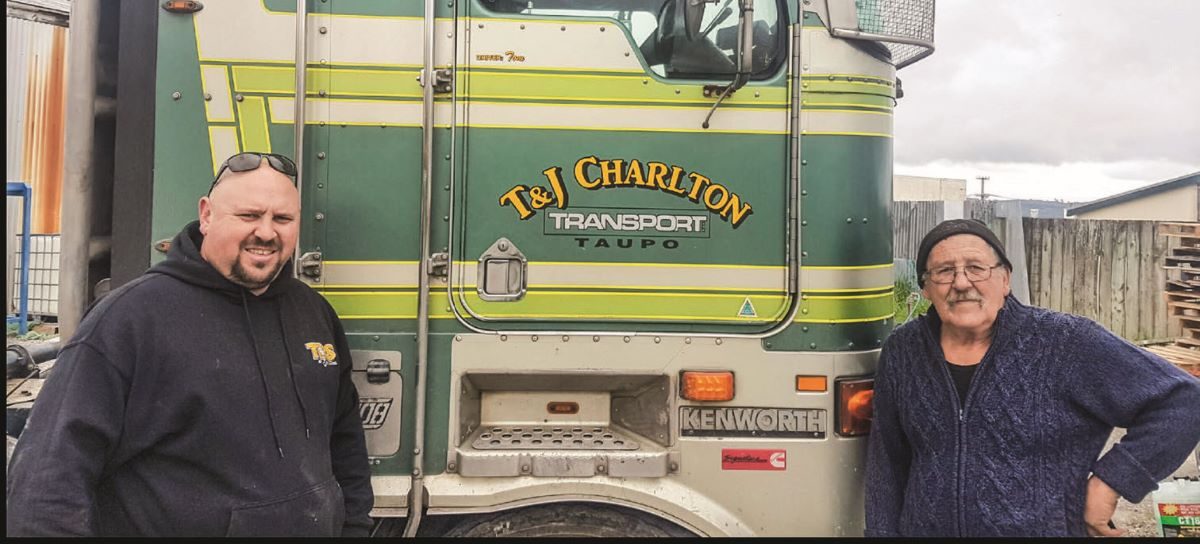
When 50MAX and HPMV came into play, the councils and NZTA could have saved a lot of time and money spent assessing the ability of bridges to handle the new proposed weights by just asking the old-school drivers. They all had been tested many times and passed with flying colours.
Charlie says it took them probably five or six years to realise he had a No.2 goods licence, which only allowed him to drive 40 miles against the rail in Auckland.
“They wrote to me and said that I had better pull my head in, and so I did. And then, of course, they opened up the licencing after that. For a while, you could go with permits, but then they opened it right up and you could cart anywhere you liked.”
Charlie says driving for Mainfreight in the company’s early days was very different from what it is like today.
“It was good. Gazza and I had the wharf. We would take beer and that to the wharfies. When we’d go down to get our sea freighters off the ship, everything would be all sorted, and they were good people, you know.
“We never used to bribe them as such, but we used to enjoy their company and so they bent over backwards for us.”
In those days, Charlie never envisaged the powerhouse Mainfreight would end up being today. “I didn’t know that they were going to be worldwide, but I knew they’d do well because Bruce and Neil Graham, who used to run the South Island, were pretty switched-on cookies, and they didn’t do anything for nothing, and they treated us pretty well.
“It’s a huge outfit now – worldwide. I still keep in touch. I still see Bruce every now and again, and one of his daughters.”
As mentioned earlier, Charlie worked for STL for 30 years and says the fact it was a family business is what kept him there. He says he used to take the owners’ children with him in the truck during the school holidays.
“Now they’re the bosses, but they treated me like part of their family, and likewise, I treated them the same. They’re probably the best firm I ever worked for, and we still keep in touch quite closely.”
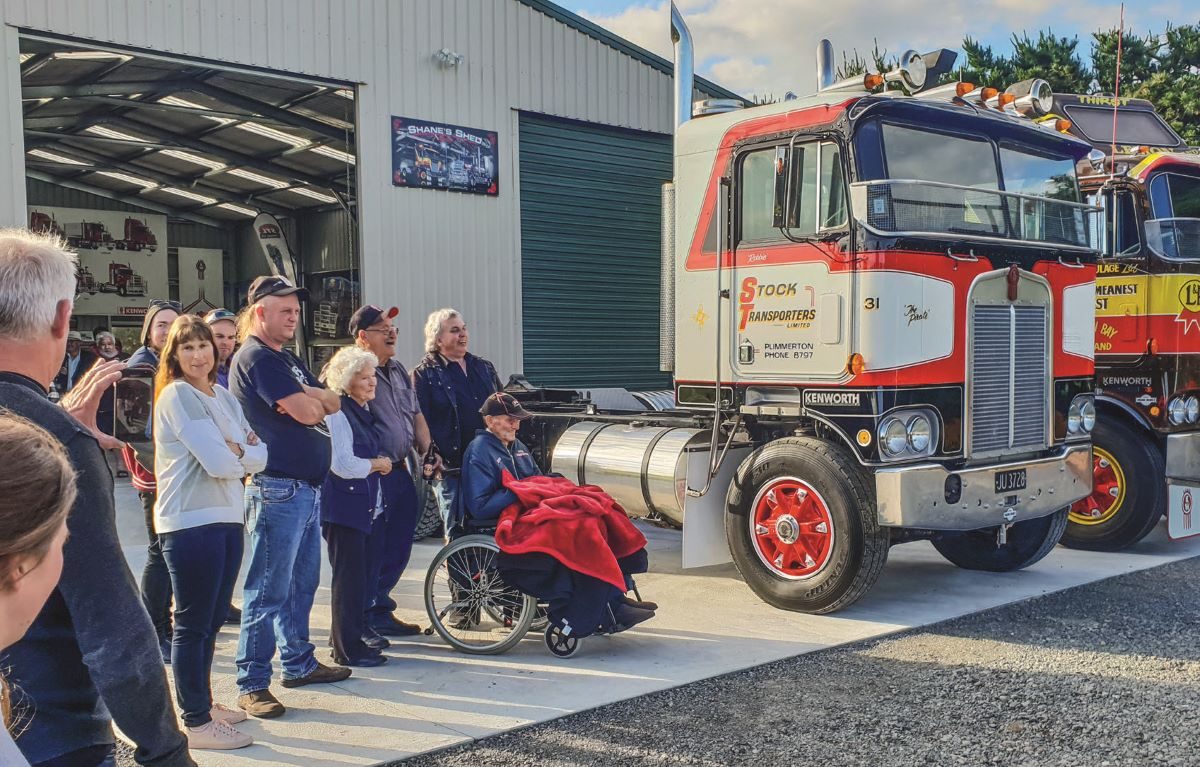
The work was varied – Charlie says it involved carting from Kaitaia to Invercargill, anything from general freight to over-dimensional freight for big construction projects.
“You always had something to do and somewhere to go. I was never on a set run; I was a floater. I drove a few different trucks for them over the years, – an R-model Mack and a Mack Super-Liner – they’re nice trucks. I also drove a Kenworth and I had a brand-new Western Star while I was there.”
Charlie has continued to do some work for STL even though he’s now officially retired. He says that in his day, Snow was a hard boss, but fair, and when he stepped down, his sons bought his shares. “And now one boy’s out on his own and the other two still run STL Line Haul.” [STL was sold on 1 July 2023 to a group of investors, becoming STL Linehaul (2023) Ltd.]
Charlie has two children – daughter Jessie and son Tom. His son followed his father into the industry and is now an owner-driver. “Tom’s got three logging trucks under T and J Charlton. He’s got a Kenworth 659 and two Kenworth K200s, carting out of the Taupo forest.”
Charlie says he used to take both children with him until they were old enough to go to school.
“With Tom, I got him a job down here when he was 15, and he rode with me and learned most of his stuff off me. He had two or three jobs, then he got a job on a logging truck, and he’s been logging ever since. I’ve encouraged him and helped him and he’s doing well. He’s got his head screwed on; he’s absorbed a lot of information.”
When asked what he’s enjoyed the most in all his years of driving, Charlie says it’s the people. “Friends, other drivers, storemen, managers. The people are the best part of it; it’s been a lot of fun. I’d like to say a thank-you to a lot of my employers because I appreciated them giving me a go, and they all meant a lot to me.
“Gary Songhurst and I started at Mainfreight at the same time, and we became lifelong friends.”
At 75, Charlie doesn’t think he’d like to be starting out as a new driver today, saying the industry’s heyday has been and gone. “I wish I could carry on a bit longer, but I’m getting a bit old now. I don’t think I’d like to start again as such.”
Charlie says he’s enjoyed his life in the trucking industry, doing a variety of different things over the years. “I really enjoyed my time, especially the pirate days. Now, with the CVIU and all that, you’ve got to pull your head in a bit because there are too many of them. When there were only a few of them, it was a bit like cat and mouse, and I used to tease them, but you couldn’t get away with it today.
“I’ve got a lot of stories I can’t really tell you about because I’d either get hung or be in jail for the rest of my life! I had a lot of fun while I was doing it, and I really enjoyed the cops and robbers part of it.”















